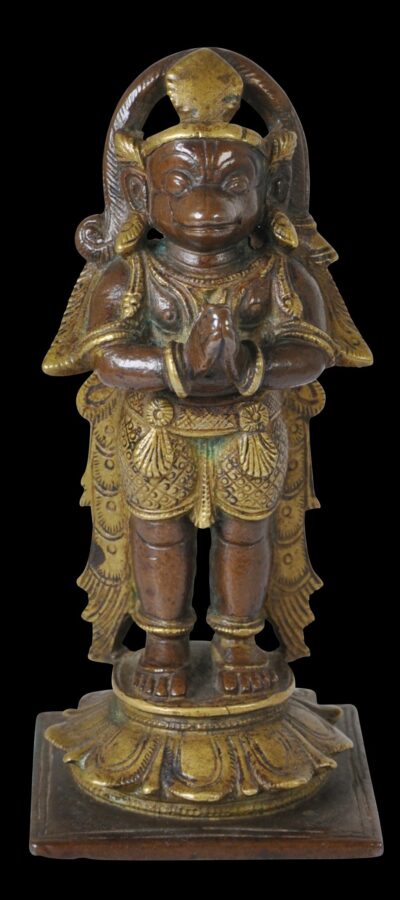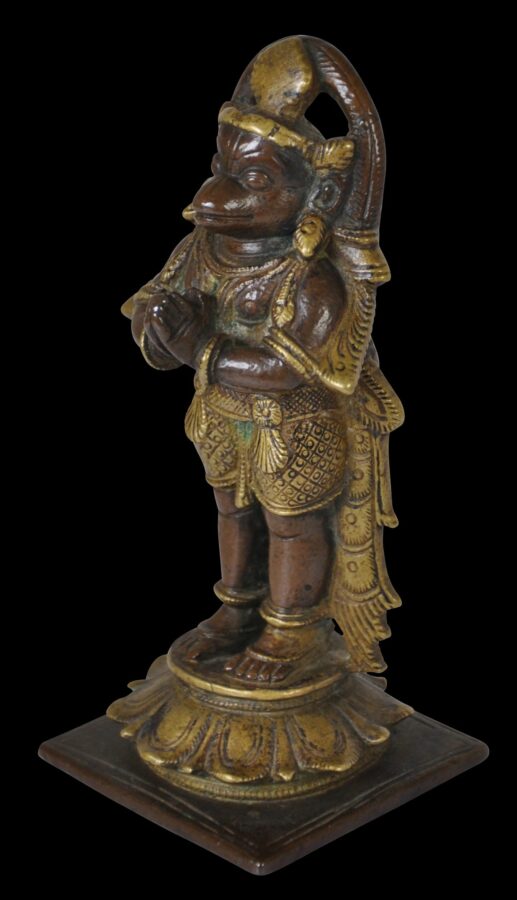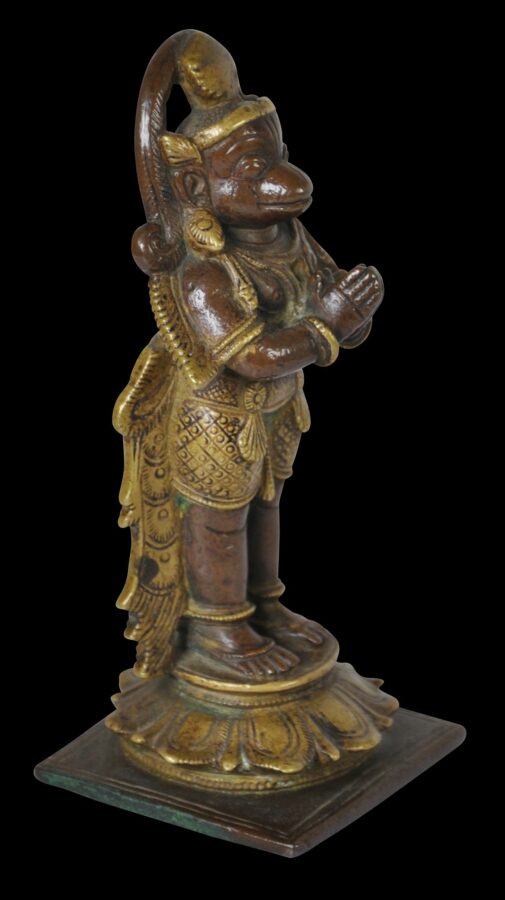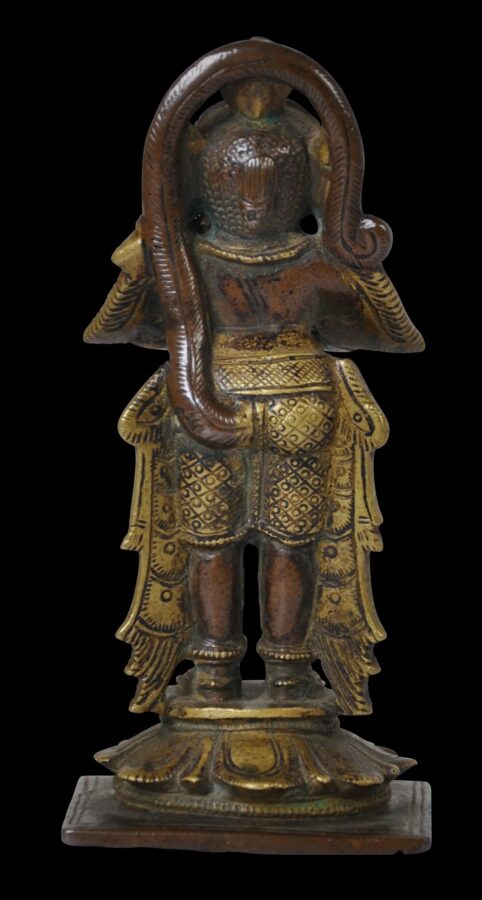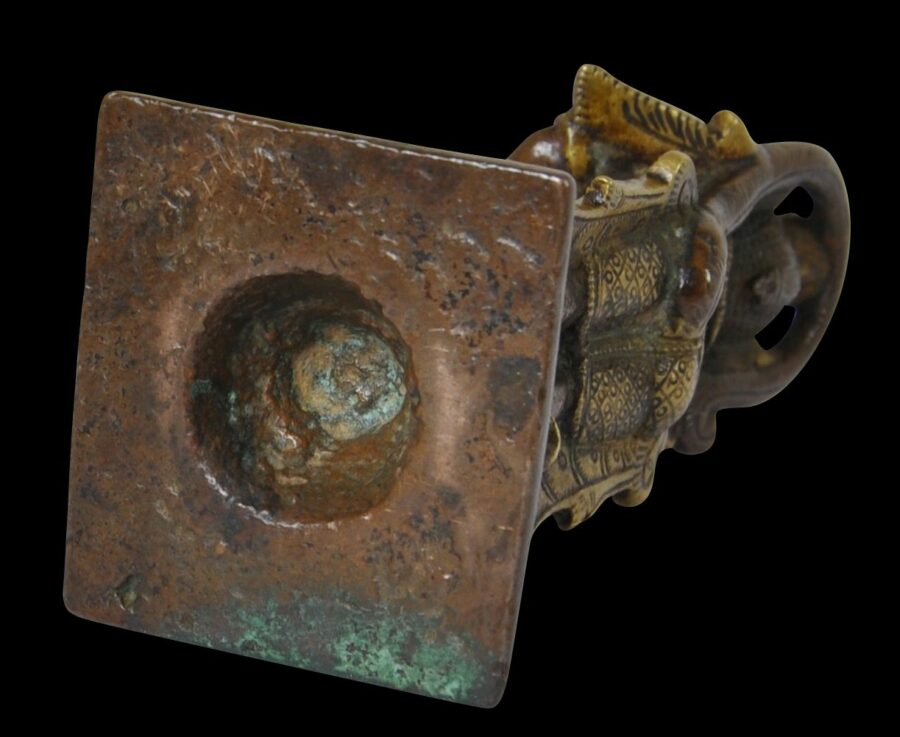This very decorative image of Hanuman cast and chiselled in brass and bronze shows the monkey-god standing on a fine lotus throne, with his hands in anjali mudra.
The deity wears a brass crown, an elaborately engraved brass dhoti with flowing ribbons, and ample jewellery. His thick, long tail is coiled up and over his head as if part of his headdress.
Hanuman is a popular god all over Hindu India but is particularly ubiquitous in the South. He is a key figure in the Ramayana epic as the head of the monkey army and is charged with capturing the heroine Sita from the evil Ravana.
This type of metalwork whereby copper and brass are used in the one item is known as ganga-jumna metalware. ‘Ganga’ refers to the River Ganges and ‘Jumna’ to the River Jumna (also called Yamuna). The Jumna is the longest tributary river of the Ganges in northern India. It travels a length of 1,376 kilometres (855 miles) before merging with the Ganges at Triveni Sangam, Allahabad, the site for the massive Kumbha Mela festival every twelve years. It is the longest river in India that does not directly flow into the sea. The water of one has a slight yellow hue on account of the alluvial mud suspended in its waters, whilst that of the other has a reddish hue, and so in this vessel, the two rivers are represented by yellowish brass and reddish copper, with the combination in the one image being symbolic of their merging and mixing at Triveni Sangam.
The image here is in excellent condition. It is pleasing and interesting at every angle.
References
Pal, P., Art from the Indian Subcontinent: Asian Art at the Norton Simon Museum, Yale University Press, 2003.
Zebrowski, M., Gold, Silver & Bronze from Mughal India, Alexandria Press, 1997.


